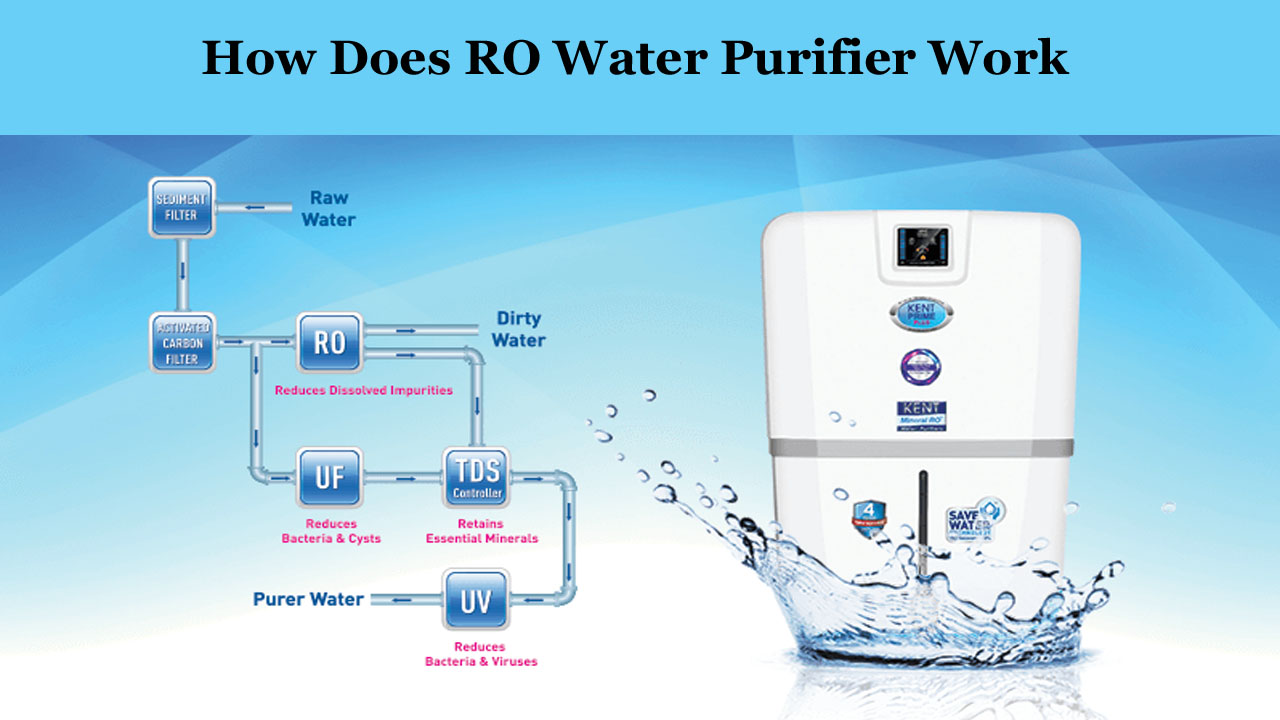Suppose you’ve ever had the pleasure of drinking water purified by a reverse osmosis system. In that case, you’ll realize how pleasant it is. Drinking water purified using reverse osmosis (R.O.) is the most acceptable option for any household. It’s water in its purest form, just the way nature meant it.
What Is The Process Of Reverse Osmosis All About?
Unless they already have a reverse osmosis system installed in their house, most people are unfamiliar with it or how it works. However, reverse osmosis is a highly sophisticated water filtration that may enhance water quality and flavour even after treatment.
The first step in understanding reverse osmosis is defining osmosis. According to Brittanica, when water or another solvent passes through a semipermeable membrane, the barrier keeps particles back. Because osmosis works, water will always flow from the most significant concentration to the lowest when using standard methods. This osmosis process involves the sources moving water and nutrients through the ground.
Reverse osmosis is fundamentally the same as osmosis in that it utilizes a semi-permeable membrane to remove impurities from water. But the main distinction is that reverse osmosis needs extra pressure to drive water through membranes since it does the opposite of what is seen in nature.
Water that is not filtered has a lower concentration of pure H2O than water that has been filtered. Because of this, external forces are required for water to flow through the system. Large and tiny impurities are blocked by the reverse osmosis membrane, allowing new, clean water and contaminants to pass through on the other side.
To put it another way, the reverse-osmosis membrane in a reverse osmosis system functions as a kind of filter by removing minute pollutants from the water you drink via a process known as strain. As a result, we get high-quality filtered water free of toxins, fresh, and flavorful! So, with a basic understanding of what osmosis and reverse osmosis are and how they function, let’s learn more about reverse osmosis water filtering systems for home use.
To What End Do I Need A RO System?
When water softeners or other filtering systems (such as a fixture-mounted carbon system) aren’t precisely fulfilling the homeowner’s demands, reverse osmosis is an excellent choice. Some people like the taste of softened water, while others prefer bottled water with a more crisp, filtered flavour. Other methods fail to catch contaminants that reverse osmosis can. Reverse osmosis is frequently abbreviated as “R.O.”
Cleans, showers, and laundry may all benefit from soft water. However, many choose not to consume it. This is because your water may still have a lot of total dissolved solids (TDS), which may have a detrimental effect on the flavour. The reason for this is that salt replaces the hard minerals, and your water may still include impurities that a softener is unable to eliminate.
Most households benefit significantly from combining a water softener with a reverse osmosis system since this system can remove unwanted sodium and other pollutants and dissolved particles.
Reverse Osmosis Filtration: What Is It and How Does It Work?
The method of purifying drinking water by reverse osmosis is more complex than we previously described in our simplistic description.
There are three canisters on the manifold of the reverse osmosis membrane and two canisters of carbon filters in these systems. Take a deeper look at reverse osmosis’ three filtering steps to see how they work together.
1. Pre-filtration
Using a reverse osmosis drinking water system, water purification begins with a procedure intended to safeguard the membrane from damage. In addition, it eliminates certain dissolved particles and reduces chlorine that may be present in your water. Known as the sediment filter or carbon block filter, this is the first cartridge. In municipal water, you’ll find a lot of silt and chlorine, which might clog the membrane and cause damage.
2. A Membrane in the Process of Reverse Osmosis
The true magic of a reverse osmosis system happens after the first filtering. When you pressurize the semipermeable membrane, your water flows through it. A synthetic plastic membrane called the reverse osmosis membrane enables water molecules to flow through. In contrast to the smaller molecules that can pass through, salt, chlorine, and calcium, as well as more giant molecules such as glucose and urea, cannot.
Water-Right often uses thin-film composite (TFC) membranes. A high rejection rate of 95% to 97% is typical for bacteria-resistant products. A carbon pre-filter is employed since TFC membranes are not chlorine-resistant.
3. Final Polishing and Post-Filtration Cleaning
Suppose any pollutants remain after the first two stages of the water purification process. In that case, they are removed by a second carbon filter (or post-filter) before it is safe to drink. Afterwards, the water is collected and stored in a holding tank until you’re ready to draw from it. As a final step, the water passes through an in-line activated carbon filter before being delivered to your faucet. While your water is ready to be utilized, you may use this to eliminate any lingering aromas or tastes from the system hoses or holding tank. Make sure your water tastes as good as it looks with a final polish!
RO Water Systems Need How Much Space?
Most homes can accommodate a Reverse Osmosis system with ease. If you’re looking for a system that doesn’t take up a ton of space, a reverse osmosis system may be the best option for you. Beneath-sink reverse osmosis drinking water systems may be positioned in basements under the sink you wish to connect to, saving you valuable cabinet space.
Unlike water softeners or water heaters, whole house reverse osmosis systems are a bit bigger and are often built at the point where your water enters your home, like an R.O. system. For the most part, a basement or utility room is where you’ll find these systems. Remember that saving money, getting better water, and other benefits are worth a little space sacrifice.
Conclusion
You’ll get better-tasting coffee and tea, clearer ice cubes, and clean, healthful water from your kitchen sink if you install a reverse osmosis system. In addition, if you’ve been drinking bottled water, you’ll be allowed to switch to tap water once again. Using an R.O. system will save you money in the long run, and your water will be healthier for the environment. Whole-house or systems are also available from Water-Right. You may even use reverse osmosis water to clean your automobile!
FAQs
1. Is R.O. Water Purification A Good Idea?
An unwelcome but inevitable consequence of living in an overly polluted world is an increased risk of contracting deadly diseases like cholera and salmonella. Still, the good news is that R.O. water filters out 99 percent of bacteria in the water you drink, lowering your risk of contracting these diseases as well.
2. Is It Safe To Consume R.O. Water?
It is not at all. The World Health Organization advises against reverse osmosis or distillation water with a low mineral content (TDS) since it might have significant health consequences for long-term use.
3. Is Boiling R.O. Water Possible?
Yes, boiling R.O. water is safe. After reverse osmosis, the bacteria may be destroyed and the water purified by boiling them off. As another point, most of the chemical pollutants found in water are removed by R.O. Boiling water will remove some of the remaining residues.

